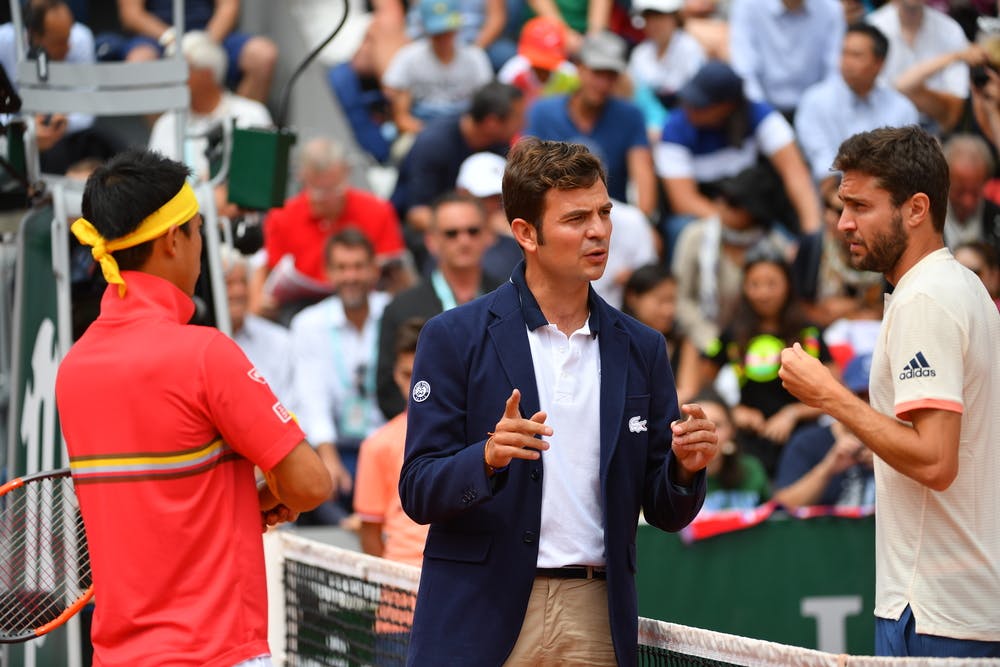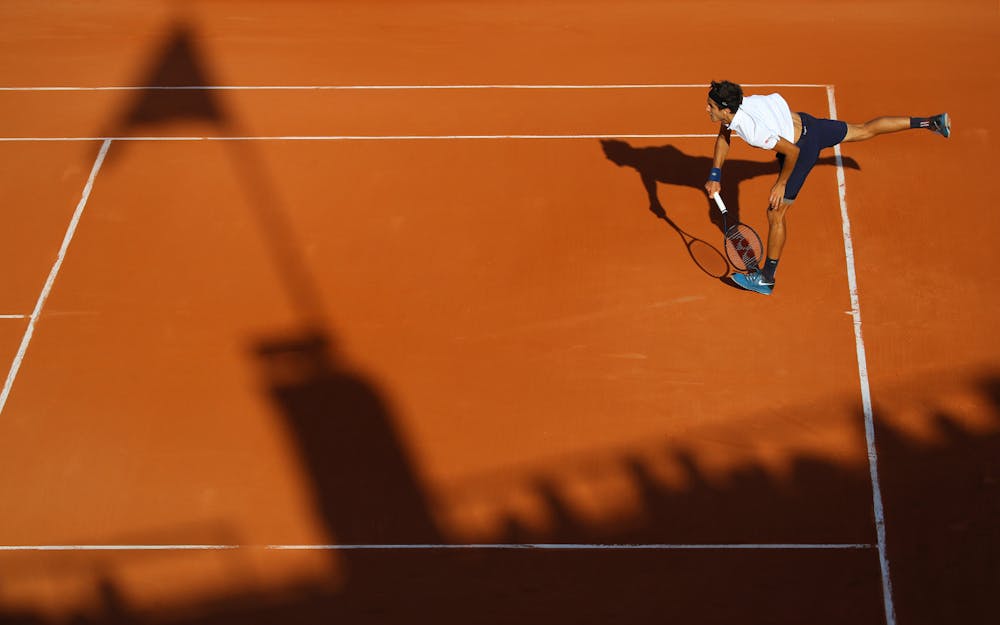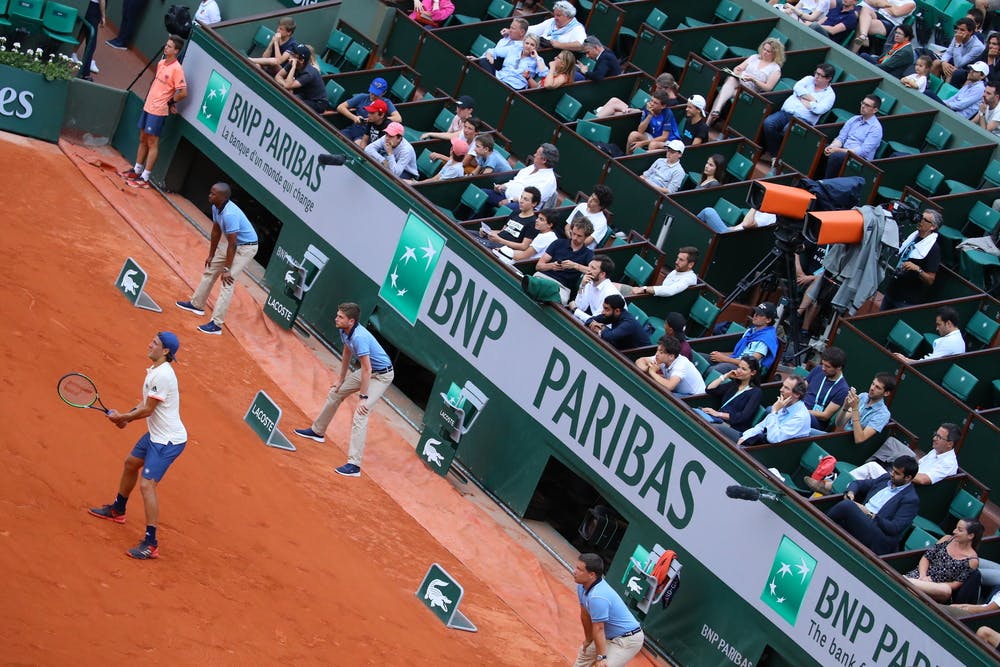“My mum told me that after a tournament when I was a kid, that I would repeat all the announcements from the chair umpires back at home each night.”
Jaume Campistol seemed destined to work in officiating.
We talk to umpire Jaume Campistol about the pleasures and demands of officiaing top-level tennis.

“My mum told me that after a tournament when I was a kid, that I would repeat all the announcements from the chair umpires back at home each night.”
Jaume Campistol seemed destined to work in officiating.
Born and raised in the area, Campistol became absorbed in tennis at Real Club de Tenis Barcelona-1899, the oldest Spanish tennis club, which hosts the ATP event on the road to Roland Garros.
From wielding a racket, Jaume then became a ball boy, then a line judge, then eventually worked his way up the umpiring ranks. Since 2010 it has been the Spaniard’s full-time job and in December 2017 the 30-year-old was promoted to the highest order – gold badge – allowing him to officiate everything from Grand Slams, to Davis Cup, Fed Cup and Olympic action.
We sit down to chat in the new umpires HQ, nestled in between Courts 7 and 9, which offers relaxed surroundings with the likes of table football and arcade games in a busy intersection of officials scuttling off to matches amid the hustle and bustle of a major tournament.
“The best part of the job goes without saying, being able to see the best tennis players in the world, in some of the finest locations, in the best tournaments," said Campistol, who can be away from home for between 25 and 30 weeks each year. “Also a great crowd makes the difference. I was recently at a Davis Cup tie in Argentina. It was challenging to control such an energetic crowd, but they were amazing.
“It was a great atmosphere to work in, you remember these moments, getting goosebumps sat on the chair is one of the best feelings in our profession. On the other side you’re on the road by yourselves and away from home a lot, which is definitely the hardest part.”
The lifestyle of perpetual travel is as demanding as their on-court exertions, having to remain focused and in peak performance during gladiatorial duels on the red dirt.
“It’s always interesting when you have these long matches. You don’t know how long a match will be when you head onto court, so you have to go set by set, game by game, even point by point. You have to stay focused and everyone will have different techniques to maintain their intensity,” continued Campistol, who admits the availability of snacks isn’t quite the same as what it is for players fuelling up at changeover.
“You have to try and stay cool, calm, and you have to stay hydrated up there. If you were really starving, you could have a banana discreetly, but that would not be too discreet.
“I try to notice player reactions and behaviours, to pick up on the atmosphere in the crowd,” added Campistol, referring to his own techniques for maintaining concentration. “I also use the tactic of looking at yellow things around the arena, which helps you concentrate. I also learnt a great tip to keep moving your toes, which reminds you mind and body that you’re very much in the match.”
It’s a view rarely captured on TV, the actual eye line of the umpire up in their chair, a money-can’t-buy spot.
“It’s absolutely the best seat in the house, however don’t forget we have to track the ball, we don’t see the full movement from the players. Also, it is the worse position to make some of the decisions, for example the let calls, because we’re along the net, it’s very difficult to see a change in the trajectory of the ball. Sometimes you have to rely on your line judges”

While Hawkeye launched into the confines of the court a decade ago, clay tournaments, including the French Open, still trust tradition, with umpires checking contentious marks.
“It is difficult if you haven’t been raised on clay, so I tend to find it easier than others,” said Campistol, who insists the current system is adequate.
“I wouldn’t want Hawkeye on clay courts because being able to inspect a mark is one of the individual, great things about this surface. The reading of a mark can be different on each clay court, each clay tournament is not the same in terms of bounce and look. That’s why we still need the human element in there.”
Apart from the chic look of the pristine Lacoste uniforms (which have strict but “understandable” instructions for wear), the unique look and sophistication of Roland-Garros sends Campistol back to his childhood.
“The reason Roland-Garros is always special to me is because I was raised on clay courts. So coming to Paris for the biggest clay tournament is just unbelievable for me,” said Campistol, who is working at his seventh French Open. “I remember when May came, I’d be in front of the TV watching those long hours at Roland-Garros, how it unfolded at the end of play with lack of light. Now I’m so lucky and fortunate to officiate on matches.”
Those memories perhaps explain his favourite French Open memory from the chair as Renzo Olivo dashed home hopes, ousting Jo-Wilfried Tsonga last summer.

“It was a great match on Philippe-Chatrier that was suspended due to bad light and we came back the next day and played just one game to finish. It was just incredible, the players were so focused, the crowd were really into it. It was an extreme circumstance playing that late, so dark.”
Campistol often watches back parts of matches to assess his performance, to pick out where he can improve in certain situations.
“Most people will say eye sight and vision, but you also have to be very observant and have to be aware of all the aspects going on around the court including the spectators," he said.
“You must have strong communication skills to relate to the players. We can’t forget that the players are competing for a lot of points, money and pride. We have to be careful how we address our messages to them.”
Just remember next time you’re watching tennis; it is quite the task from the best seat in the house.